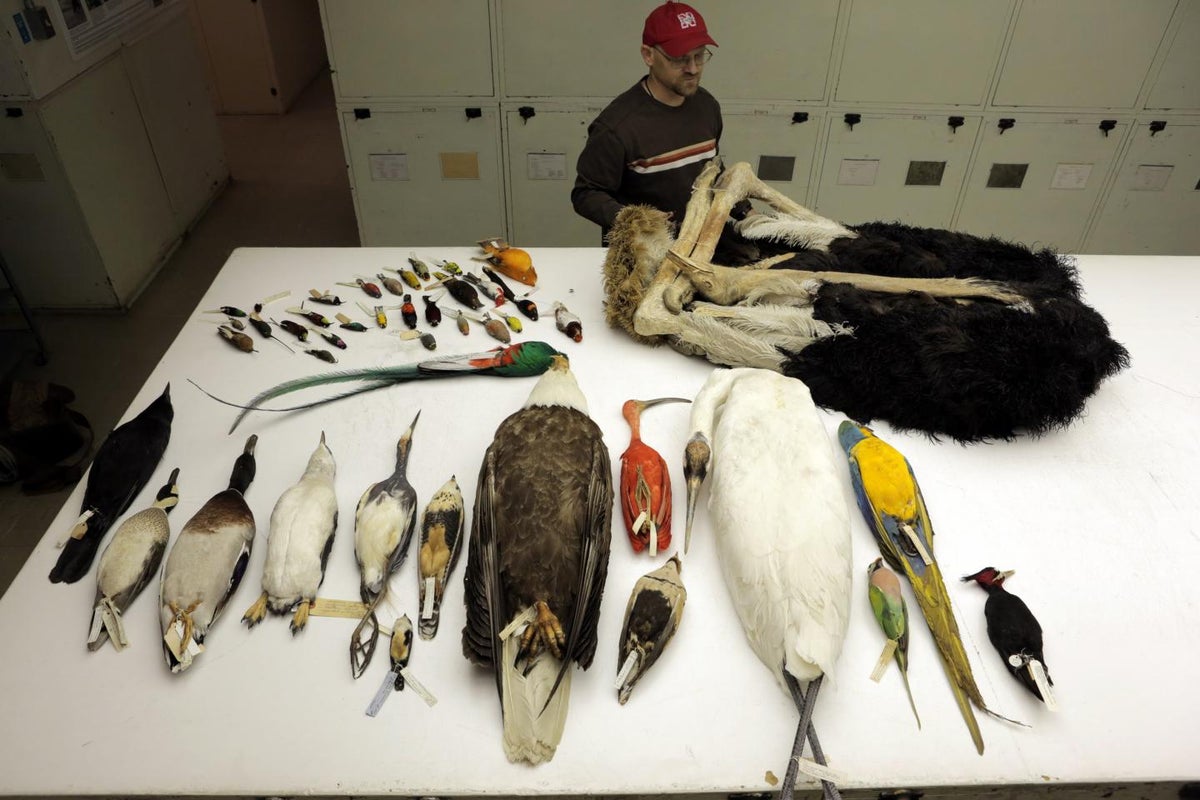
Birds with the most “unique” physical features could be the first to go extinct amid an ongoing biodiversity crisis sparked by the climate crisis, predicted a new study.
An ongoing mass extinction that has led to a “homogenisation” of bird species, poses a particular threat to the diversity of physical traits in birds, predict researchers, including Emma Hughes from the University of Sheffield in the UK.
Bird species remaining on the planet extensively vary in size and shape across class, from the giant, flightless ostrich to the tiny, buzzing hummingbird.
Many of these species, with their unique physical traits, perform distinct roles in the ecosystem – from seed dispersal in hummingbirds to scavenging in vultures – thus affecting their habitat’s functioning and productivity in special ways.
Of the nearly 11,000 known bird species across the planet, over 13 per cent are threatened with extinction amid the ongoing global mass extinction sparked by the climate crisis, data from the International Union for Conservation of Nature (IUCN) shows.
In the UK alone, more than a quarter of bird species are under serious threat with populations dwindling severely over the past 25 years, experts have warned.
The latest findings, published on Thursday in the journal Current Biology, point to a particular decline of species with unique traits and their replacement with more widespread generalist species.
“We do find strong evidence to support the hypothesis that the largest and smallest species are likely to be most at risk of extinction,” Dr Hughes said in a statement.
This could lead to birds becoming more alike in terms of their morphology as the climate crisis worsens, scientists warn.
“As species go extinct you expect the traits that they represent to also be lost. But what we found was that with morphological diversity, the traits were lost at a much, much, much greater rate than just species loss could predict,” Dr Hughes said.
“This is really important because that can lead to a major loss of ecological strategies and functions,” she added.
Scientists cautioned that most ecoregions across the world are expected to lose the diversity of physical features seen in birds at a greater rate than predicted by species loss alone, “with the most imperiled regions found in East Asia and the Himalayan uplands and foothills”.
Citing the example of the loss of vultures in the Himalayan region, researchers said these critically endangered raptors, as large-bodied, obligate scavengers, “fill distinct areas” of its ecosystem.
Vultures, with their distinct physical features, provide vital services to its ecosystem by removing decaying carcasses “which could otherwise increase the direct transmission of infectious diseases, and increase populations of opportunistic scavengers like dogs and rats that spread rabies and bubonic plague,” scientists said.
“Therefore, it is likely that the considerable loss of morphological diversity in the Himalayan ecoregions is partly driven by the loss of vultures—the most imperiled group of birds,” they wrote in the study.
“The dry and moist forests of south Vietnam and Cambodia are also vulnerable,” Dr Hughes said.
Researchers hope the new findings will help people understand the ways in which biodiversity loss will change the world.
Based on the new study results, the protection of bird communities at most risk of morphological and phylogenetic homogenisation should be a “key conservation priority,” they said.
Scientists warned the findings may be an “underestimate” of the degree of such morphological homogenisation that will, and has already occurred, in the era of human-driven climate change.
“The global extinction crisis doesn’t just mean that we’re losing species. It means that we are losing unique traits and evolutionary history, including species that could confer unique benefits to humanity that are currently unknown,” Dr Hughes added.







